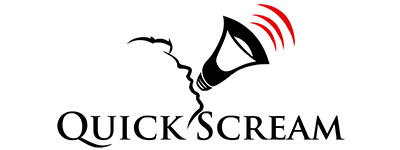If you want to grow your business using Facebook, you must know how to analyze Facebook Page Insights. Those numbers have plenty of valuable information to improve your Facebook marketing strategy.
Facebook Insights help you run successful marketing campaigns and level up your social media game. You will get data about page views, your audience demographics, the performance of each post, and much more. But all that information can get overwhelming too.
So, in this article, I’m listing the most important metrics to track your page growth. You can access these Insights on the left-hand side of your Facebook page.
Let’s check them out one by one:
1- Page Overview
The Overview tab provides a snapshot of what’s going on your page.
The first section is the Page Summary showing the changes in Page Views, Page Likes, Post Engagement, and other metrics. So, depending on whether you want to boost engagement or increase awareness, you can check the relevant data.
The second section shows the performance summary of the five recent posts. And in the third section, you can add different business pages to watch. It will help you observe the performance of competitors’ pages, learn about ongoing trends, or even find content ideas.
2- Followers Insights
The Followers tab shows the growth of followers over time. You can see the breakdown of organic (and paid) follows and unfollows of your page.
So, if a period showed rapid growth or high unfollows, you can check the posts and campaigns from that time. The analysis will help you understand why people follow/unfollow your page.
Followers insights also let you know the different places from where people followed your business page. It will help you build your content plan. For example, if people are following while browsing the page, you can create more informative and relatable content.
Check the best practices suggested by Facebook to improve page visibility.
3- Likes Insights
The Likes tab shows the total number of likes on your page. It also displays the number of organics (and paid) likes and unlike.
You can track and crosscheck the data to find what worked and what didn’t. For example, if many people unliked your page on a certain day, the reason might be one of the posts.
Also, if page visitors don’t like your page, you might try adding call-to-actions in different sections. And, of course, content type and frequency can also be experimented with.
4- Reach Insights
The Reach tab provides a breakdown of the number of people who saw any of your posts at least once. The graph shows details of organic and paid reach of your page.
Then, you can check the trends in likes, comments, and shares to find which metric affected the reach. The insights also include the data about page recommendations.
So, based on the data, you can infer which posts resonated with your target audience.
You can also monitor posts that triggered negative engagement, like hiding and reporting, to avoid getting shared such posts.
5- Page Views Analytics
The Page Views tab dives into the total number of page views, as well as section-wise views. Whether people are interested in the location, live videos, or something else, you can have all the information here.
The data is also broken down to reveal the demographics of your page visitors. It’s filtered by age and gender, city and country. The graph even details the devices used by the visitors.
So, if the data resembles your target audience, you’re on the right path. Else, you’ll need to change your strategy.
Page Views analytics also provide the top sources from where your visitors are coming.
6- Actions on Page
The Actions on Page tab tells what actions people take when they visit your page. Here, you can see the number of clicks on different action buttons: Get Directions, Website, Phone number, etc. And the data can be filtered by age and gender, city, country, and device.
Actions on Page insights help you understand which group of page visitors are taking actions beneficial to your business. Thus, you can adjust your content strategy to better connect with that audience group.
7- Posts Analytics
The Posts tab provides various information related to posts. You get to see the days and times of the week when your audience is online. Thus, you can schedule your posts for those times.
The data also reveals what types of posts – links, photos, or videos – performed better. You can see the reach, clicks, reactions, comments, and shares. You get details of individual posts’ performance and the top posts from the pages you watch.
All that information will help you decide what posts you should be sharing.
Check how Facebook recommends using page insights.
8- Videos Insights
The Videos tab has the metrics to help you understand which videos are performing well. Here, you’ll find the total time (in minutes) of video plays on your page.
The tab also contains the data for 3-second video views. It’s the number of times a video was played for at least 3 seconds (replays excluded). Then, another section below shows the individual performance of top videos.
So, by analyzing the patterns, you can recognize which type of video content resonated with your audience and which didn’t.
9- Stories Insights
The Stories tab provides insights and demography analytics about the recent stories. The data is visible for 28 days, showing how those stories have performed, along with the published date and time.
You can see the number of unique opens, comments, and other engagements with the Stories. So, for example, if you notice high opens on certain days or hours, you can try to repeat the performance.
Forward taps, Backward taps, and Exits are among the other metrics available. So, if the data says viewers skipped a story, it’s a cue to avoid such content.
Conclusion
Now you know how helpful can Facebook Page Insights be in understanding your audience and growing your business. So, track them regularly and get the best out of your Facebook business page.



